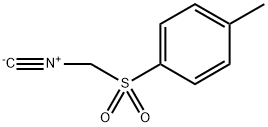Tolylene Diisocyanate (2,4- ≈80%, 2,6- ≈20%) , ≥98.0%(GC) , 26471-62-5
Synonym(s):
4-Methyl-m-phenylene diisocyanate, TDI;Toluylene diisocyanate
CAS NO.:26471-62-5
Empirical Formula: C9H6N2O2
Molecular Weight: 174.156
MDL number: MFCD01778251
EINECS: 247-722-4
PRODUCT Properties
| Melting point: | 19.5~21.5℃ |
| Boiling point: | 247℃ |
| Density | 1.22 |
| vapor pressure | 0.03 hPa ( 20 °C) |
| refractive index | 1.5660 to 1.5700 |
| Flash point: | 137 °C |
| storage temp. | Store below +30°C. |
| solubility | miscible with Ether,Acetone,Benzene |
| form | clear liquid |
| color | Colorless to Light yellow |
| Odor | Sharp, pungent odor |
| explosive limit | 0.9-9.5% (v/v) |
| Water Solubility | 124mg/L at 25℃ |
| LogP | 3.43 at 22℃ |
| CAS DataBase Reference | 26471-62-5(CAS DataBase Reference) |
| IARC | 2B (Vol. 39, Sup 7, 71) 1999 |
| EPA Substance Registry System | Toluene diisocyanate (26471-62-5) |
Description and Uses
Toluene diisocyanate (TDI) is an aromatic diisocyanate that is a clear, pale yellow liquid with a sharp, pungent odor, which is insoluble in water and miscible with most common organic solvents. TDI (CAS No. 26471-62-5) consists of two isomers: toluene-2,4-diisocyanate (2,4-TDI) (CAS No. 584- 84-9) and toluene-2,6-diisocyanate (2,6-TDI) (CAS No. 91- 08-7), which is commercially produced in different ratios. The most common ratio is 80% 2,4-TDI/20% 2,6 TDI. TDI is widely used and accounted for 34% of the global isocyanate market in 2000.
Toluene diisocyanates are used primarily to manufacture flexible polyurethane foams for use in furniture, bedding, and automotive and airline seats. Other, smaller uses are for polyurethane elastomers (for automobile bumper covers, industrial rollers, sport soles and boots, and mechanical goods) and coatings (for automotive refinishing, wood finishes, and high-performance anti-corrosion coatings)(ICIS 2009). Toluene diisocyanate–based rigid polyurethane foam is used in household refrigerators and for residential sheathing or commercial roofing in board or laminate form (IARC 1986). “Pour-inplace” or “spray-in” rigid foam is used as insulation for truck trailers, railroad freight cars, and cargo containers. Polyurethane-modified alkyds contain approximately 6% to 7% isocyanate, mostly toluene diisocyanates, and are used as coating materials, such as floor finishes, wood finishes, and paints. Moisture-curing coatings are used as wood and concrete sealants and floor finishes. Aircraft, truck, and passenger-car coatings often are composed of toluene diisocyanate prepolymer systems. Castable urethane elastomers are used in applications requiring strength, flexibility, and shock absorption, and are resistant to oil, solvents, and ultraviolet radiation. They are used in adhesive and sealant compounds and in automobile parts, shoe soles,rollerskate wheels, pond liners, and blood bags. They are also used inoil fields and mines. Certain elastomer products are produced from the pure 2,4 isomer rather than the 80:20 mixture.
Safety
| Symbol(GHS) |   GHS06,GHS08 |
| Signal word | Danger |
| Hazard statements | H315-H317-H319-H330-H334-H335-H351-H412 |
| Precautionary statements | P201-P273-P280-P302+P352-P304+P340+P310-P305+P351+P338 |
| Risk Statements | 26-36/37/38-40-42/43-52/53 |
| Safety Statements | 23-36/37/39-45-24/25 |
| RIDADR | 2078 |
| RTECS | NQ9490000 |
| Autoignition Temperature | 620°C |
| HazardClass | 6.1(a) |
| PackingGroup | II |
| HS Code | 29291090 |
| Hazardous Substances Data | 26471-62-5(Hazardous Substances Data) |
| Toxicity | A designated hazardous waste (EPA). It is a colorless to yellow solid, melting at about 20°C. TDI and MDI (diphenylmethane diisocyanate) are used in the manufacture of polyurethane foams by reaction with polyhydroxy compounds. These foams are used for insulation, upholstering, etc. Exposure is commonly by inhalation of the vapor. Both TDI and MDI can cause irritation of eyes and mucous membranes, in severe cases leading to pulmonary edema. Sensitization to TDI is common and frequently rapid, leading to an allergic reaction and some loss of lung function. In the United Kingdom, the threshold limit value is 0.02 ppm for not more than 20 min, or 0.005 ppm for 8 h. |






